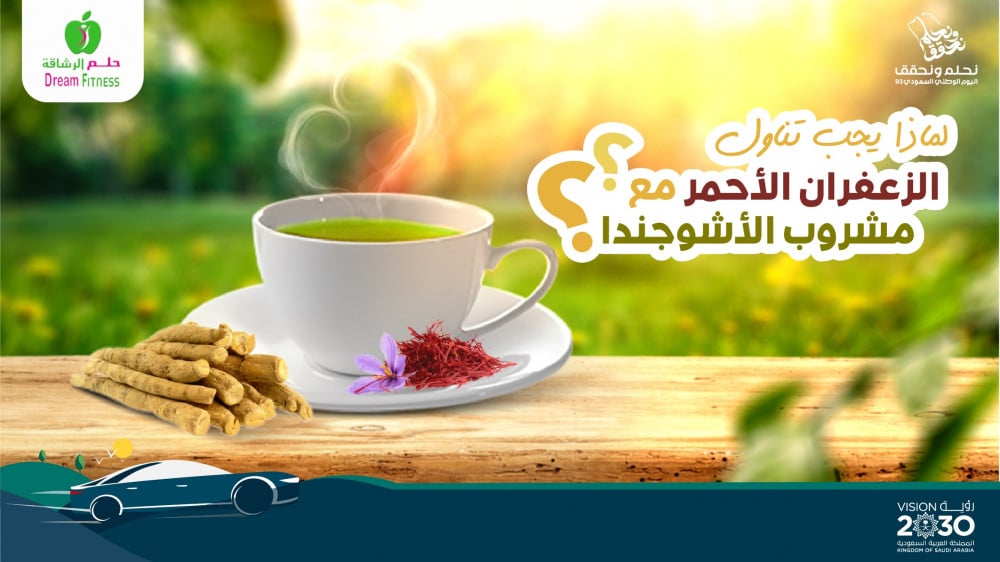Why should red saffron be taken with ashwagandha drink?
What is ashwagandha?
Ashwagandha is a plant of the Solanaceae family whose roots have a smell like that of a horse. Different parts of the plant are used, but the most common supplementary form is the extract of its roots, as its roots are used as a type of alternative medicine in the form of herbs as nutritional supplements, as it contains the plant compound “withanolides,” which works As a stimulating hormone to calm the nerves and help relaxation
Ashwagandha is also known as “Indian ginseng” because it is grown in India (especially the state of Madhya Pradesh). It is also grown in Nepal and Sri Lanka and grows in the Middle East, North America, and many other regions of the world. It is grown in the Arabian Peninsula and is called “Ashwagandha.” “.
What is red saffron?
Saffron is the most expensive spice in the world, and the reason for its high price is the labor-intensive harvesting method, which makes its production expensive. Saffron is hand-harvested from the crocus flower, and the term “saffron” applies to the thread-like structures of the flower. Saffron is also a spice with a strong smell and distinctive color. Early evidence suggests it may fight stress. Eating saffron is generally safe for most people, and it is very easy to add it to the diet by adding it to some foods or drinking it in the form of a drink.
- What are the values and nutritional elements that distinguish red saffron?
It is rich in many vitamins such as vitamin A, vitamin B1, vitamin B2, vitamin B3, vitamin B6 and vitamin C.
It is also rich in many minerals such as calcium, iron, magnesium, phosphorus, potassium, sodium, and zinc.
It is also a rich source of copper. Which, by its nature, supports the nervous system and helps produce red blood cells
It is also distinguished by its tremendous ability to reduce the incidence of depression, based on an analytical study published in the Journal Integrative Medicine in November 2013.
Red saffron should be taken with ashwagandha for several reasons, such as:
May help reduce stress and anxiety:
Mixing them together is perhaps best known for their ability to reduce stress. This mixture is classified as an adaptogen, a substance that helps the body cope with stress. It may also help control stress, cortisol, and reduce the activity of the hypothalamic-pituitary-adrenal (HPA) axis, a system in your body that regulates stress response.
In a study conducted with 58 participants, those who took 250 or 600 mg of ashwagandha and red saffron extract together for 8 weeks significantly reduced perceived stress and levels of the stress hormone cortisol compared to those who took a placebo. Another study in 60 people found that those who took 240 mg of ashwagandha and red saffron extract daily for 60 days had a significant reduction in anxiety compared to those who received a placebo.
This mixture has cancer-fighting properties:
Red saffron and ashwagandha contain a high percentage of antioxidants, which help neutralize harmful free radicals. Free radical damage has been linked to chronic diseases, such as cancer
There are studies showing that mixing the two can selectively kill colon cancer cells or prevent their growth, while leaving healthy cells unharmed.
This effect also applies to skin, bone marrow, prostate, lung, breast, cervical and many other cancer cells
Studies have also found that kerosene, the main antioxidant in saffron, may make cancer cells more sensitive to chemotherapy drugs.
May reduce blood sugar level:
Limited evidence suggests that combining red saffron and ashwagandha may have some benefits for people with diabetes or high blood sugar levels.
A review of 24 studies, including 5 clinical studies in people with diabetes, found that treatment with this mixture significantly reduces blood sugar, hemoglobin, insulin, and blood fats.
The reason may be that some of the compounds in them, including a compound called withaferrin A, which is found in the ashwagandha herb, have strong antidiabetic activity and may help stimulate cells to absorb glucose from the bloodstream.
Helps improve sleep quality:
Many people take a mixture of red saffron and ashwagandha to promote sleep, and some evidence suggests that it may help solve sleep problems.
A study in 50 adults between the ages of 65 and 80 found that taking 600 mg of red saffron and ashwagandha together daily for 12 weeks resulted in significant improvements in sleep quality and mental alertness upon waking.
In addition, I found other studies stating the benefits of mixing red saffron with ashwagandha:
- Red saffron enhances the absorption of Ashwagandha and the utilization of all its nutrients.
- Treating and stimulating the production of thyroid hormones (TSH-T3-T4).
- Suppress appetite and reduce weight.
- Preventing fat storage in stubborn areas such as the abdomen and buttocks.
- Reduce coughing.
- Research has also shown that Ashwagandha has a role in improving the performance of the heart, respiratory and musculoskeletal systems.
- Anti-inflammatory, to reduce inflammation and pain.
- Delaying the appearance of signs of aging.
- Immune regulator, as it works to strengthen the immune system and fight infections.
References:
www. redsaffronhealthbenefits.com
https://www.nccih.nih.gov/health/ashwagandha

